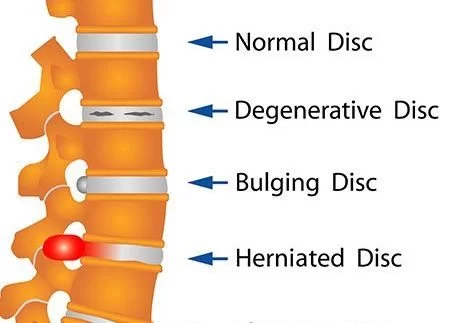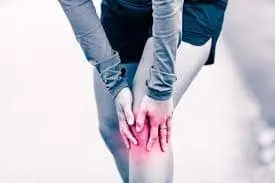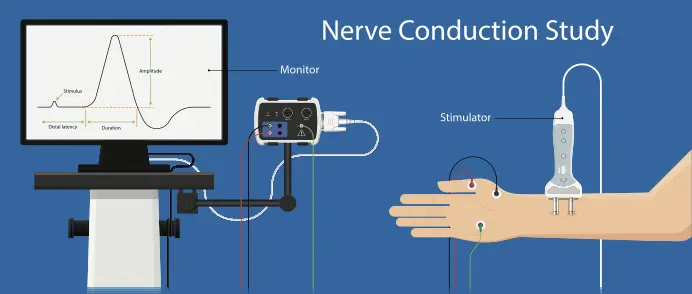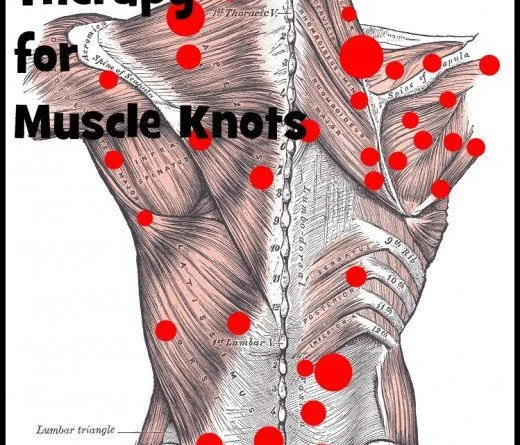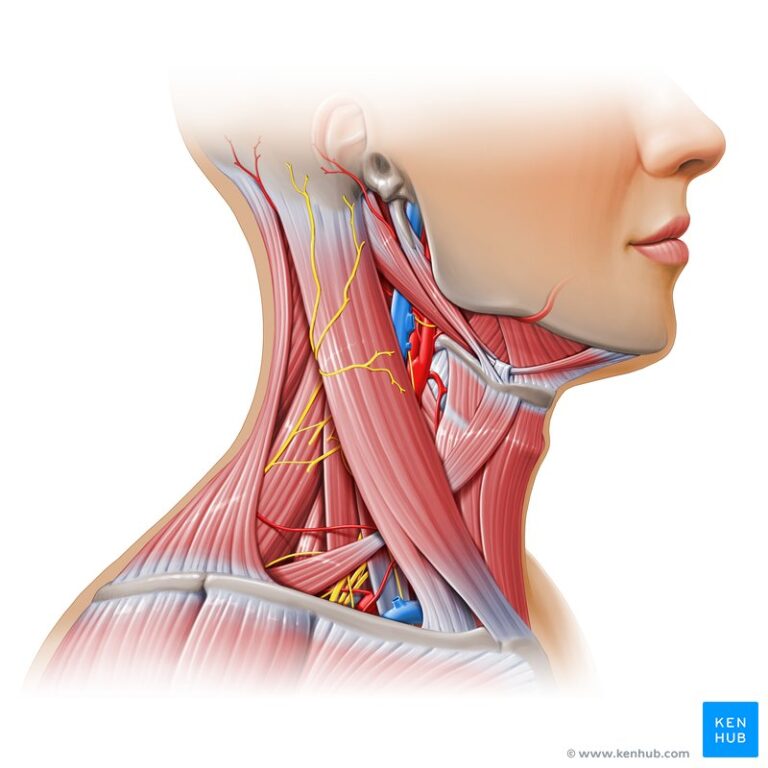Bulging Disc in the Neck
Table of Contents
What is a Bulging Disc in the Neck?
A Bulging Disc in the neck, also known as a cervical bulging disc, is a condition that affects the intervertebral discs in the cervical spine. These discs serve as cushions between the vertebrae, providing support and allowing flexibility in the neck. When a disc bulges, it means that it extends beyond its normal position, potentially causing pressure on the surrounding nerves and leading to discomfort, pain, and restricted mobility.
While the natural aging process is a common cause of a bulging disc, it can also result from sudden trauma, poor posture, or repetitive strain on the neck. Symptoms may include localized pain, numbness, tingling sensations, and weakness in the arms, shoulders, or hands.
Treatment for a bulging disc in the neck often includes a combination of pain management, physical therapy, and lifestyle adjustments. In severe cases, surgical intervention might be necessary to alleviate persistent symptoms and prevent further damage to the spinal cord. It is crucial to consult a healthcare professional for an accurate diagnosis and an appropriate treatment plan tailored to individual needs.
Symptoms of Bulging disc in the Neck
A patient may have little to no pain if a bulging disc is not yet at the point of herniation. It might be challenging to identify bulging disc symptoms before the issue worsens since a bulging disc may not be painful at all because it has not yet reached a particular severity level.
Bulging discs frequently cause pressure points on adjacent nerves, which result in a range of symptoms. Depending on the degree, symptoms of a bulging disc capacity range from little tingling and numbness to moderate or severe pain. When a bulging disc reaches this point, it typically means herniation is imminent or has already occurred.
- Finger, hand, arm, neck, or shoulder tingling or pain. This could show a bulging disc in the cervical area.
- Foot, thigh, lower back, and buttock pain. This is the most common symptom and could show an issue in the lumbar region.
- Difficulty walking or feeling of injury while lifting or holding things.
- Muscle Spasm on Neck
- pain to move.
- A reduced range of motion.
These symptoms need immediate medical evaluation as they could be a sign of a potentially life-threatening condition.
When the sciatic nerve is damaged, the sensations are present down one leg or the other, but usually not both. Bladder incontinence can happen because of a bulging disc compressing the nerves that control the bladder. In this case, seek emergency medical assistance immediately. Upper back pain radiating to the stomach or chest could be a symptom of a mid-spine bulging disc. Muscle spasms may also happen with any bulging disc. While some patients may go on for years without interrupting symptoms, others may experience extreme or life-threatening issues.
Causes of Bulging disc in the Neck
The spine is made up of several associated bones. These are vertebrae, which protect the spinal cord, the soft tissues, and the nerves that pass through the spine.
Each vertebra is separated by a linked disc to preserve their flexibility and mobility. These spinal discs are made of sturdy elastic tissues.
When the spine twists or rotates, the spinal discs change in size to support the movement and avoid friction between the bones.
It is possible for spinal discs to displace. This is most frequent in the lower spine. However, it can also happen in the upper part of the spine, and it can create a bulge in the spinal canal. In more extreme cases, it could cause a herniated disc.
Herniated and bulging are terms that relate to the disc. Some people compare a bulging disc to a drop that is going flat, whereas they consider a herniated disc similar to a tire blowout.
Each disc contains a soft inner substance with a near outer layer, which maintains the structure of the disc.
A herniated disc happens when damage to the outer layer causes the inner substance to leak out of the disc. The causes of bulging or herniated discs involve sudden or long-term trauma.
Having poor posture and lifting weights with improper form are examples of what can create long-term trauma.
Other possible causes involve:
- being overweight.
- being older.
- being sedentary.
- having intervertebral disc disease.
Spinal discs weaken over time and become more at risk of injury. This means that aging raises the risk of a bulging or herniated disc. It depends on what starts to degenerate first.
If the nucleus pulposus, or the inner soft tissue, begins to degenerate first, a disc could have no problem.
However, if the annulus fibrosis, which is the outer supporting layer, starts to degenerate first, the inner nucleus pulposus may move into the vertebral canal and press on a nerve root or the spinal cord.
Potential Causes for a Bulging Disc
- People who have guide a sedentary lifestyle or those who smoke raise the chances of bulging discs.
- Continuous stress on the disc from injury or heavy lifting and strain can wear them down throughout the years.
- Weakened back muscles can accelerate the process and may show a sudden herniation of the weakened disc.
- Although bulging discs happen over time, herniated discs could happen quickly due to trauma.
- Bad posture involves improper body positioning during sleep, sitting, standing or exercise are all risk factors that could contribute to the development of a bulging disc.
- Obesity.
- Activities or sports with high levels of contact also pose risks.
- Runners who fail to apply shoes that provide orthopedic support could also develop bulging discs.
- The discs may deteriorate as a result of activities that strain and stress the spine.
Diagnosis
We will take a thorough medical history, evaluate your spine, and question you about your pain and how it started when you visit one of our doctors for the pain you need help with. We might also:
- Examine your stability, range of motion, muscle strength, and reflexes.
- To determine the location of the vertebrae in the area causing your pain, please have an MRI.
- Perform other imaging tests as required.
- We will provide a correct diagnosis and work with you to provide treatment that meets your needs.
Treatment of Bulging disc in the Neck
It might be best to involve other forms of treatment with physical therapy and exercises. This can support recovery.
Taking certain pain relief medication can also be helpful for decreasing discomfort in the neck, shoulders, arms, and back. These are usually over-the-counter medications such as nonsteroidal anti-inflammatory drugs and analgesics.
In more serious cases, treatment could include receiving steroidal injections to decrease pain and inflammation.
The most serious cases can need cervical spine surgery. This will include removing some or all of the disc. It could be necessary to insert a cervical plate or screen to assist in stabilizing the spine after surgery.
Fortunately, there are several methods to treat a bulging disc.
- Conservative treatment is also approved for nonoperative management. It involves rest and medications and is frequent enough to heal a bulging cervical disc.
- Nonsteroidal anti-inflammatory drugs (NSAIDs) such as ibuprofen are the first-line prescription medicine for a bulging disc. For more severe pain, your doctor could prescribe a muscle relaxer or narcotic pain reliever.
- Physical therapy (PT) could relieve pressure on the nerve.
- At-home traction devices can improve pressure on the nerve.
- Cortisone injections (known as epidural steroid injections, or ESI) into the spine can give longer-term relief.
- Various surgical procedures treat cervical herniation. However, only about 10 percent of people with bulging discs ultimately need surgery.
Physical therapy
Physiotherapy treatment for a cervical disc bulge is vital to quicken healing, reduce the likelihood of recurrence, and ensure an optimal issue. Treatment may include:
- Soft tissue massage.
- Electrotherapy (e.g. ultrasound).
- The application of Postural Taping.
- The application of Postural Support.
- Joint mobilization.
- Cervical traction
- The use of a suitable contoured pillow or cervical collar.
- The use of a Lumbar helps with sitting.
- Dry needling.
- Exercises to push the disc back ‘in’ and to increase strength, core stability, flexibility, and posture.
- Education.
- Activity modification advice.
- Biomechanical correction.
- Ergonomic advice.
- Clinical Pilates.
- A functional restoration program.
- A gradual return to activity program.
Summary
A bulging disc in the neck can happen when a spinal disc slips out of place. This can lead to a herniated disc, wherein injury causes the inner substance of the disc to leak out. Both conditions can create pain in the neck.
Physical therapy and exercises can assist in treating a bulging disc in the neck. This will involve a mixture of gentle neck stretches and exercises to strengthen the neck and surrounding muscles.
A range of other treatment options, such as pain relieving medicine, Physical Therapy Treatment, Exercise, and surgery, are also available.
FAQs
Cervical disc herniation is a usual create of neck pain in adults. The severity of the disorder can range from mild to severe, and even life-threatening.
Without surgery or injections, a disc bulge is a slide disc that is curable. The key to recovering from a bulging disc is specialized care that fixes the underlying problems that led to the bulge. In addition to chiropractic and physiotherapy, NSD Therapy is the best and most effective disc bulge treatment.
Disks expose signs of wear and tear with age. Over time, disks weaken and their cartilage stiffens. These changes can cause the outer layer of the disk to bulge out fairly evenly all the method around its circumference -so it looks a little like a hamburger that’s too big for its bun.
On average, most cases of disc herniation resolve connecting two to twelve weeks following injury. Since many cases improve within two to three weeks following injury, physical therapy is not suggested until three weeks after the onset of symptoms. Similarly, in most cases decisions within six weeks of symptoms.
Though exercising can’t necessarily heal a bulging disc, it can strengthen your back, raise spine stability, and assist in decreasing stress on the disc. It’s important to note that every injury is different, so it’s in your best interest to contact a medical professional before participating in any effortful exercise.
In most cases, the pain from a herniated disc does make better within a couple of days and completely resolves in 4 to 6 weeks. Restricting your activity, ice/heat therapy, and taking over-the-counter medications will support your recovery.
As much as the discomfort will allow, try to go about your normal business, but don’t strain your body further. suggests refraining from twisting, heavy lifting, high-impact activities, and prolonged sitting while the herniated disc recovers.
It can create pain in the buttocks, legs, or back. It can affect your ability to walk too. Bulging discs usually infect multiple discs. This condition progresses over time and can cause other disc degeneration-related issues, like lumbar stenosis (narrowing of the spinal canal).
While bed rest could be beneficial in the short term to decrease inflammation and pain after herniated disc surgery, prolonged bed rest can have negative results on your health and recovery.
The changes that happen to discs over time involve a loss of distinction between outer and inner tissues, and the outer layer begins to display fissures and tears, usually in your 20s or 30s, even if these don’t yet create problems.
The words ‘disc bulge’ suggest that the disc appears symmetric with a small amount of outpouching and no significant herniation. Specifically, disc bulges do not access the ligament barrier that separates the disc from the spinal canal. Disc bulging is often an unexpected finding on MRI.
Lying on your back with a thinner pillow is a comfortable sleeping position for herniated discs in the neck. It decreases the risk of putting undue pressure on the spinal discs of the neck.
A slipping, ruptured, or bulging disk is a different name for a herniated disk. Leg, back, and neck discomfort are frequently brought on by it. Herniated disks typically recover on their have or with minimal at-home care.
First off, vigorous resistance training should be avoided because it can put too much strain on the spine and exacerbate the pain (or herniation). Patients with a bulging disc in their lumbar spinal region should also avoid loaded movement patterns like the deadlift, back squat, or front squat.
The perfect sleeping position for a herniated disc is on your back. Lying on your back hold your spine in a neutral position so you have less chance of pinching the nerve. For increased comfort, nestle a small pillow or rolled-up towel under your knees and lower back.
The first stage of healing includes rest, painkillers, spinal injections, and physical therapy. Most people resume their normal activities after six weeks. If the symptoms don’t go away, surgery can be recommended.
Avoid activities if you have a herniated disc.
Avoid sitting for too long time.
Try not to take too much bed rest. …
Vacuuming Might Be Damaging. …
Try to avoid bending over.
In many cases, a bulging disc will show improvement with a few days of rest coupled with low-effect activities to avoid raised stiffness. Pain relievers (like NSAIDs), ice, and heat are great at-home advice.
Reference
- Kandola, Aaron. What to Know About a Bulging Disc in the Neck. 21 Mar. 2019, www.medicalnewstoday.com/articles/324762#:~:text=A%20bulging%20disc%20in%20the%20neck%20occurs%20when%.
- Image “Cervical Slipped Disc/Bulging Disc Doctors NJ and NYC.” Spine & Rehab Group, www.thespineandrehabgroup.com/cervical-slipped-disc-bulging-disc.
- Morris, S. Y. (2020, February 6). Bulging Discs: About That Pain in Your Neck. Healthline. https://www.healthline.com/health/neck-pain/bulging-disks#How-are-bulging-discs-diagnosed?.
- Bulging Disc Symptoms & Treatment | Aurora Health Care. (n.d.). Aurora Health Care. https://www.aurorahealthcare.org/services/aurora-spine-services/bulging-disc.
- Mork, T. (2022, September 29). Bulging Disc Symptoms, Causes, and Treatments Options. Dr. Tony Mork. https://drtonymork.com/back-pain/disc-herniation/bulging-disc-symptoms-causes-treatments-options/.
- Cervical Disc Bulge – Cervical Disc Herniation – PhysioAdvisor. (2022, March 22). PhysioAdvisor. https://physioadvisor.com.au/injuries/neck-head/cervical-disc-bulge.

